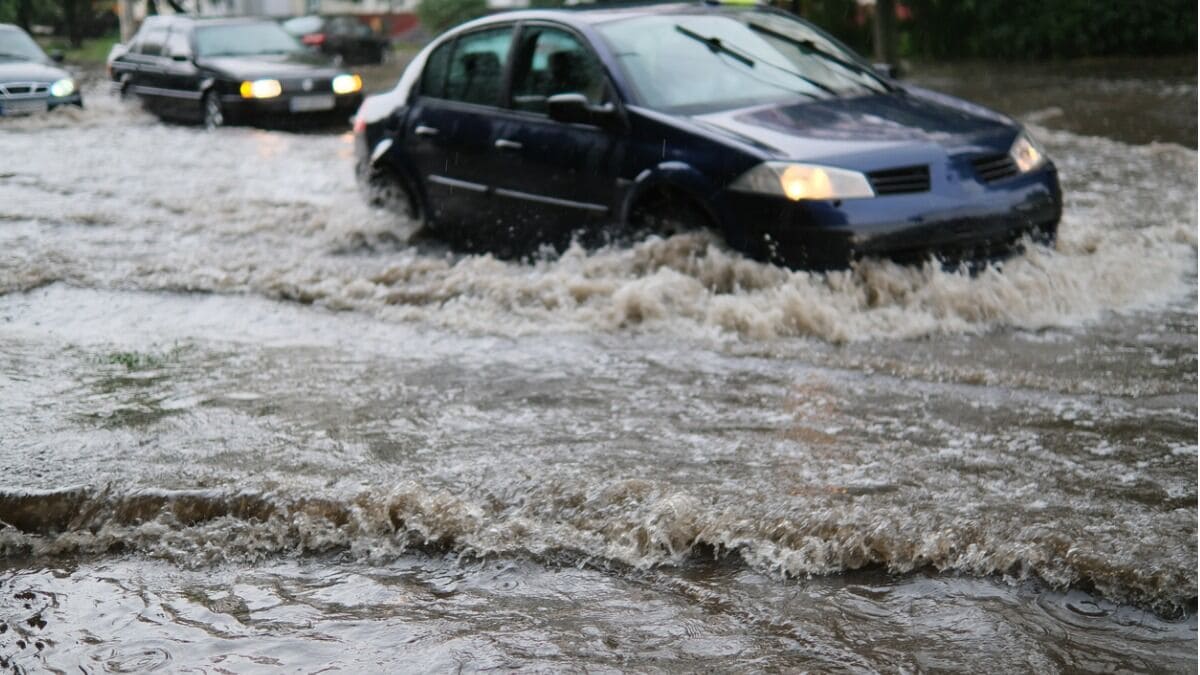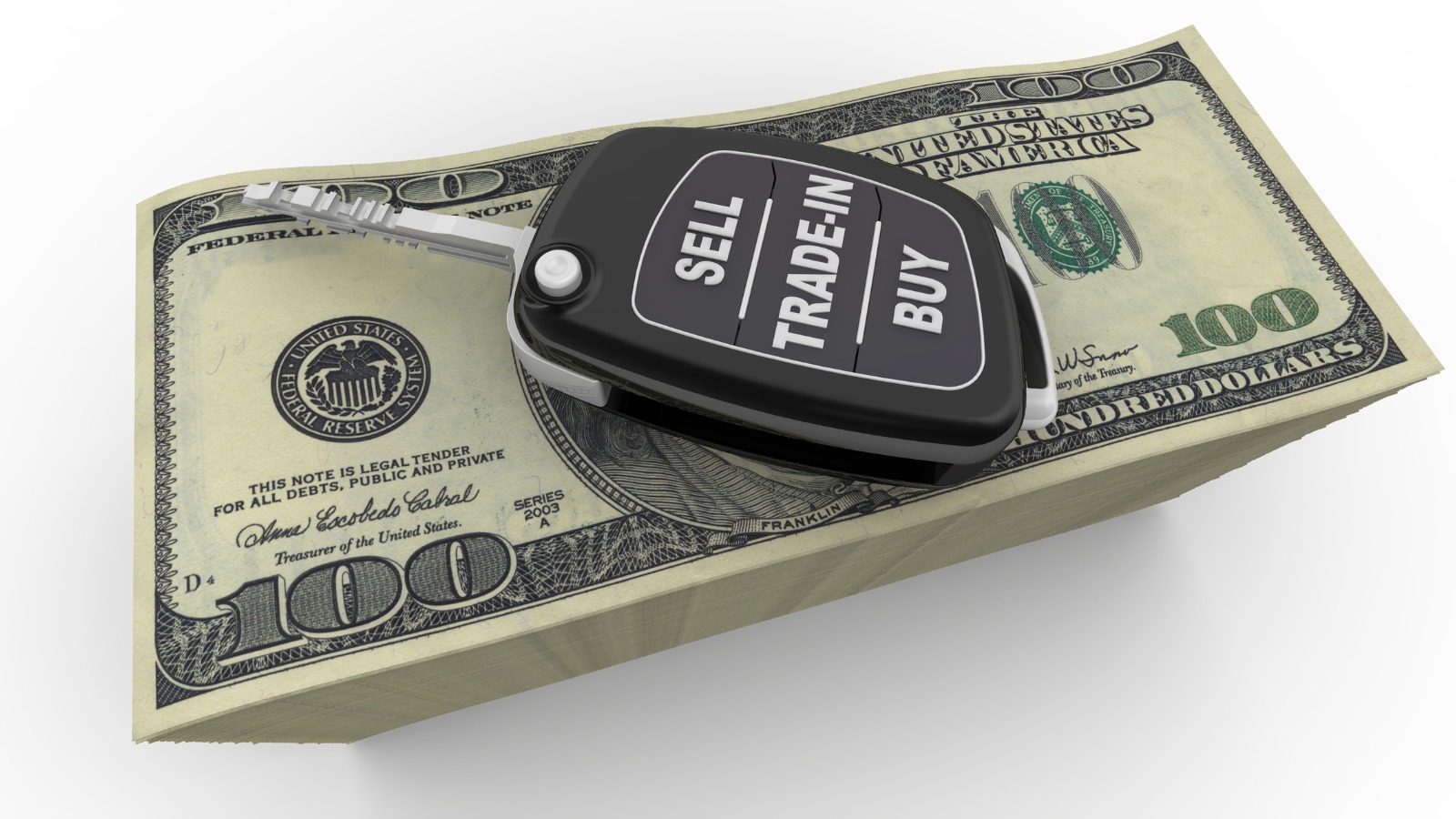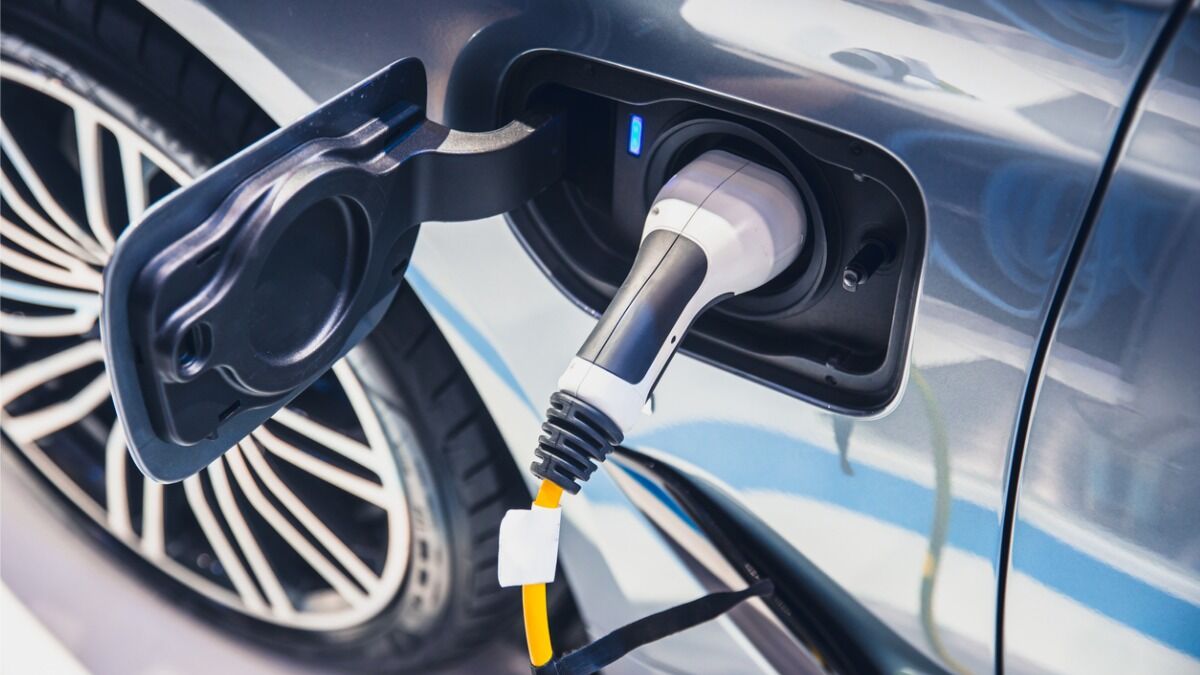Quick Facts About Flooded Cars and Safety
- Flooding causes extensive and sometimes hidden vehicle damage, affecting even full-size trucks and SUVs, with risks to safety and drivability.
- Owners should avoid driving flooded cars until they inspect and document the damage, contact their insurance, and take additional precautions with EVs because of fire risk.
- Not all flood-damaged cars are total losses. Some can be repaired, but salt water is especially harmful, and shoppers should look for hidden damage in post-disaster deals.
Significant flooding incidents in Texas and North Carolina are recent examples of catastrophic weather that leave hundreds of ruined automobiles after the water recedes. If you live in a flood-prone zone, you might experience torrential rain with rushing runoff or hurricane winds pushing a surge of water, rapidly turning your driveway or garage into a murky swamp. Heavy rains and flash flooding wreak havoc on any vehicle. Even high-riding trucks and SUVs aren’t immune to the dangers and costly repairs caused when a wall of water rushes into your home or workplace.
The main concern is that unless your vehicle was completely submerged, it’s hard to know how extensive the damage might be. Is it only cosmetic, and is the car safe to drive after a flood? Or is the internal damage even more severe than it appears on the surface?
We’ve compiled eight tips for owners and potential buyers dealing with a flood-affected vehicle. Sure, using this common-sense advice might keep you safe from scams and help you save money. And while your financial security is important, your physical safety is paramount. Flooded cars may have hidden problems that can cause accidents.
Tips for Handling Flooded Cars
- Contact your insurance company and let them know what happened. If you already have comprehensive coverage, your auto insurance policy might cover the repair or replacement costs. (Insurers often have “binding restrictions” that prevent you from adding coverage once a storm is in the forecast.) Take photos of visible damage. Be sure to focus on the waterline if the water has receded considerably by the time you have access to the vehicle.
- When in doubt, don’t drive a flooded car until you know the extent of any damage. You might return to your vehicle hours or even days after the water recedes. Foul water might seep into the engine, so starting the car could make a bad problem much worse (and more expensive). Even relatively shallow floodwater is still corrosive and can significantly affect the car’s brakes.
- Read between the lines, or at least try to look for one. Like a ring around a dirty bathtub, you might notice a subtle line on the car’s exterior body panels, windows, and possibly inside the cabin itself. This likely indicates where the water crested, and it could give a good idea about the severity of the flooding. With this in mind, it’s still best not to drive the vehicle until you have it checked by an expert.
- Dry the car as quickly as you can. Mold can start in 24-48 hours. Open the doors and windows and remove any floor mats. As we’ll discuss below, this is especially important if salt water or a brackish mix of fresh and salt water has flooded your vehicle.
- We’re focusing most of our attention on advice centered around flooded vehicles that are parked. However, we must reinforce a basic driving rule. Purposefully driving on a flooded road is just plain dumb. Please don’t do it! You could be putting your life and the safety of others at risk; never mind the health of your car. For example, if water gets into the vehicle’s air intake, you will be in big trouble and stop dead in your tracks. And while that 4-wheel-drive SUV you’re piloting might seem impervious to anything Mother Nature throws your way, even the toughest trucks can get stranded or bogged down in high water with unknown obstacles lurking beneath the surface.
- The good news is that not every flooded car will be a total loss. If the water levels got high enough to soak the interior carpets, but not so high as to ruin the engine and electrical system, you could resolve things by spending several hundred dollars or more for a professional cleaning. Again, it’s best to talk to your insurance company and have the car inspected by an expert.
- Having any water in your vehicle is a problem. Salt water is even more damaging due to the corrosive effect it can have on rubber hoses and wiring. Cars that sit in salt water for any length of time can develop serious problems with the electrical system and brakes. Remember, after making it through flooding, the last thing you need is a car that unexpectedly refuses to stop at a red traffic signal.
- Beware of any too-good-to-be-true deals on cars and trucks immediately following a natural disaster. State regulations determine when a car or truck is considered a total loss due to flooding. This helps prevent unscrupulous sales tactics, especially when a large-scale natural disaster affects thousands of vehicles in one location.
Flooded Electric Car Safety
The advice above also applies to any electric vehicle (EV), but they require an additional note. Electric cars that have been exposed to floodwaters, especially salt water, are at risk of battery pack damage that can cause short circuits and fire. The National Highway Traffic Safety Administration (NHTSA) warns that if an EV has water damage from a flood, it should not be parked in a garage or within 50 feet of buildings, other vehicles, or anything combustible, because of the risk of delayed battery fires. Owners should move affected EVs to open areas and have professionals inspect the vehicles before driving or charging them.
What Insurance Covers Weather Damage?
Comprehensive coverage offers protection against extreme weather, theft, vandalism, and other events that are out of your control. You can only file a car insurance claim for weather damage if your policy includes comprehensive coverage effective before the storm is in the forecast.
MORE: What to Do if Your Car Is Flooded: Steps You Must Take
Is a Flood-Damaged Car Repairable?
If a car sits in water up to its dashboard or corrosion ruins sensitive electronics, it’s likely a total loss. However, some late-model cars might be repaired and retitled (usually as “flood” or “salvage”), depending on how much water flooded the vehicle. State rules vary, and insurers evaluate the results of a full diagnostic scan and moisture testing before deciding whether to repair or consider these cars a total loss.
MORE: Flooded Car? FAQs for Affected Owners and Shoppers
Can the Government Help With Flooded Cars?
Your insurance company is the first step in getting help repairing or replacing your flooded vehicle. The Federal Emergency Management Agency may also provide assistance after widespread natural disasters.
Editor’s Note: This article has been updated for accuracy since it was originally published.








